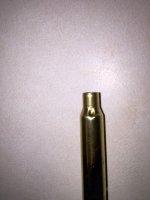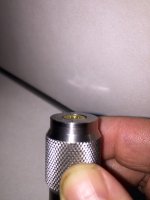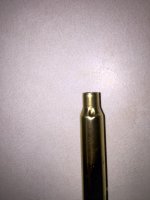M4Carbine503
Inactive
Ok my fellow reloaders I need your help. I have been loading for several years, but it has always been pistol calibers. I am new to reloading the .223 cartridge. I am sizing my Lake City brass with a Redding Full Length Sizing Die and then checking my length with a Dillon Case Length Gage. The sizing die is somehow placing a big dent on the shoulder of each and every piece of brass I run thru it. And although the pictures don't really show it, the rest of the shoulder has ripples going all the way around it. What am I doing wrong?? I set-up the die exactly as Redding's instructions say. Is it the die body causing this or is it the expander ball? It fits perfectly in my Dillon Case Gage so I'm pretty sure it will chamber properly. But I know it isn't right and it's ugly as all get up. I'm assuming that once it's fire formed it will return to normal.
Attachments
Last edited:



